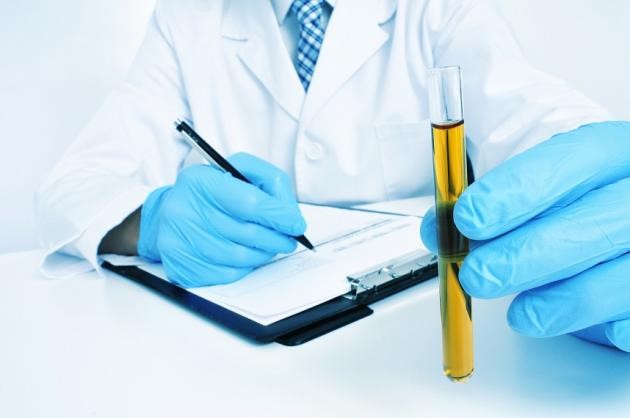
Urine test: what it is used for and what it detects
The urine test is a technique for diagnosing kidney dysfunctions, but also various cardiac, liver and metabolic disorders
How the urine test is performed
There are two different types of urine collection, depending on the type of test to be performed:
- the timed sample which consists of collecting the first morning urine
- the timed sample, which consists of the collection of urine released over a 24-hour period.
Urine should be collected and stored in special sterile containers after thorough genital hygiene, especially for women, who should refrain from performing this type of test during the menstrual period.
For proper analysis, the extemporaneous sample should be collected no more than two hours ago, while the timed sample should be stored in a refrigerator for the duration of collection.
What the physical test of urine shows
Volume: in an adult it ranges from 1200 to 1500 ml over 24 hours.
An increase in urine volume can be due to taking diuretics, chronic kidney disease, diabetes; a decrease to dehydration or kidney disease.
Colour: under normal conditions urine has a straw-yellow or amber colour.
It turns golden yellow when taking antibiotics or vitamins; yellow-orange when there is an excess of urobilinogen; brown due to the presence of bilirubin; clear red due to the presence of haemoglobin, myoglobin or porphyrins; cloudy red due to the presence of blood or urates; blackish-brown due to the presence of methaemoglobin, alkaptonuria, melanin; blue-green due to the presence of indacans or following pseudomonas infection.
The intake of certain foods or drugs can change the colour of the urine.
Appearance: urine is transparent under normal conditions.
It is cloudy in the presence of carbonates, phosphates, uric acid, proteins, white blood cells, bacteria, spermatozoa; it is milky in case of pyuria; it may contain precipitates due to the presence of phosphates and urates.
Odour: urine may smell of ammonia in case of bacterial infection.
Density: between 1010 and 1030; a decrease is a sign of chronic renal failure.
What the chemical test of urine shows
pH: ranges between 5.5 and 7.5; it can be as low as 4.5 in the case of a meat diet or 8.0 in those on a vegetarian diet.
Glucose: if blood glucose exceeds 180 mg/dl, glycosuria may occur, although the threshold for passing sugar into the urine is personal.
Protein: must be less than 15 mg/dl; in pregnancy it can be as high as 50 mg/dl. Pathological proteinuria may be minimal (0.5 g/l) in renal calculosis, polycystic kidney and chronic glomerulonephritis; moderate (0.5 to 4 g/l) in diabetic nephropathy, chronic or acute glomerulonephritis, nephrotic syndrome and multiple myeloma; it is severe (greater than 4g/l) in acute glomerulonephritis, lupus erythematosus and nephrotic syndrome.
Haemoglobin: is absent under normal conditions; indicates the presence of blood in the urine.
Ketone bodies: their presence may be found in pregnant women, children following febrile episodes or in the presence of diabetes mellitus.
Bilirubin: a yellow-red substance produced by splitting haemoglobin, the red pigment found in red blood cells. Under normal conditions it should be absent; its presence indicates liver damage, pancreatic carcinoma, viral hepatitis or jaundice.
Urobilinogen: under normal conditions it should not exceed 0.2 mg/dl; an increase indicates liver damage, haemolysis or constipation; a decrease occurs in the case of biliary obstruction, accelerated intestinal transit or taking antibiotics.
What the microscopic test of the urine shows
Haematuria: the occasional presence of red blood cells may be due to intense physical exertion, strong emotional states or exposure to low temperatures; in the event of persistence, the treating physician should be consulted for further investigation.
Leukocyturia: the presence of leukocytes indicates an inflammatory or infectious process (vaginitis, cystitis, urethritis, etc.).
Cylinderuria: Cylinders are agglomerates of proteins and other elements that form in the renal tubules. Their presence may indicate renal dysfunction.
Salts and crystals: if in large quantities, they may indicate kidney stones.
Calculi: indicate idiopathic hypercalciuria, hyperparathyroidism or hyperoxaluria (calcium salts).
Addis count: under normal conditions, 1 million red blood cells, 2 million white blood cells and up to 10,000 hyaline cylinders are eliminated with urine over the course of 24 hours.
Standard values
Colour: Yellow
Appearance: Clear
pH: 5.5-7.5
Haemoglobin: Absent
Ketone bodies: Absent
Bilirubin: Absent
Leucocytes: Absent
Specific gravity: 1010-1030
The urine test may give different results from the standard ones, but this does not necessarily mean that it is due to a disease: it is important not to be alarmed and to have the test results evaluated by a doctor.
Read Also
Emergency Live Even More…Live: Download The New Free App Of Your Newspaper For IOS And Android
Urine Tests: Glycosuria And Ketonuria Values
Colour Changes In The Urine: When To Consult A Doctor
Paediatric Urinary Calculus: What It Is, How To Treat It
High Leukocytes In The Urine: When To Worry?
The Colour Of Pee: What Does Urine Tell Us About Our Health?
Pee Colour: Causes, Diagnosis And When To Worry If Your Urine Is Dark
Haemoglobinuria: What Is The Significance Of The Presence Of Haemoglobin In Urine?
What Is Albumin And Why Is The Test Performed To Quantify Blood Albumin Values?
What Is Cholesterol And Why Is It Tested To Quantify The Level Of (Total) Cholesterol In The Blood?
Gestational Diabetes, What It Is And How To Deal With It
What Is Amylase And Why Is The Test Performed To Measure The Amount Of Amylase In The Blood?
Adverse Drug Reactions: What They Are And How To Manage Adverse Effects
Albumin Replacement In Patients With Severe Sepsis Or Septic Shock
Provocation Tests In Medicine: What Are They, What Are They For, How Do They Take Place?
What Are Cold Agglutinins And Why Is The Test Performed To Quantify Their Values In The Blood?
Why Is Pee Yellow? The Color Of Urine And The Role Of Urobilin
Sugars: What Are They Good For And When Are They Bad For Us?



